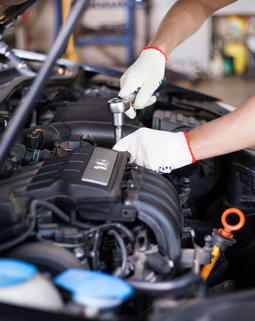To prevent common failures in a car's clutch system, the best way to give your car's clutch a long life is to understand how it works fundamentally, so you can detect anomalies in time and avoid major risks while driving.
The clutch has the function of connecting or disconnecting the power transmission from the engine to the gearbox, which then drives the car's axle to put it in motion or to change gears using the clutch pedal. So, any care or maintenance must involve using each component correctly. If you follow these simple steps, you can certainly extend the lifespan of your car's clutch.
Clutch Care and Maintenance
-
Gear Shifting: Always shift gears with the pedal fully depressed, smoothly, and coordinated. Shifting abruptly can damage various components. When releasing the clutch pedal, do so smoothly and in a coordinated manner.
-
Keep the Gear Lever Light: Do not press the gear lever downward, as it adds unnecessary weight. Hold the lever laterally, not from the top, and release it immediately after shifting gears.
-
Avoid Resting Foot on the Pedal: Never rest your foot on the clutch pedal, as it activates the system when not necessary and can damage the components. This practice is common among many drivers, and it's likely no one pointed out this small but important detail when you learned to drive.
-
Don't Use the Clutch as Support on Inclines: If your car is on an inclined slope and you need to move it, always use the handbrake when starting to prevent the entire weight from concentrating on the clutch. This is another common practice among many drivers, using the clutch to help move the car on a slope, which adds extra weight and can quickly wear out the clutch.
-
Always Put the Car in Neutral When Stopped: In brief stops, such as at a traffic light, put the car in Neutral (N) to avoid unnecessary wear on the clutch disc. Leaving a gear engaged and the clutch pedal fully depressed is an unnecessary strain on the system that serves no practical purpose and only causes wear.
-
Check Pedal Tension: Most wear on the clutch system is due to loose cables that activate the engagement system. One clear symptom is when you notice that the pedal is either stiff or too loose. This is a clear sign that the cables are not functioning properly and require inspection by a mechanic.
-
Pay Attention to Strange Noises: You should be able to identify when a noise is coming from the clutch system. The most common occurs when the gear shift does not engage properly with the engine, causing the gears to strain. Similarly, a well-maintained clutch should not make noises. If you hear internal noises, grinding, or clashing sounds when activating the system, have it checked immediately by your trusted mechanic.




